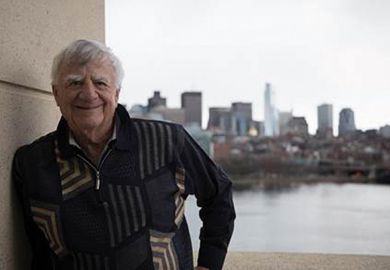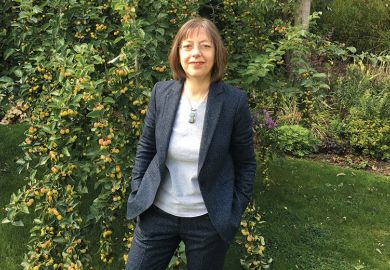What sorts of books inspired you as a child?
I grew up in a rural area where there were no bookstores and the public library had a limited selection, so I would devour any books I could get my hands on. I distinctly remember spending many hours with a series of “Snoopy” children’s encyclopedias. I read everything I could find by Louisa May Alcott, Charles Dickens, Jack London and Laura Ingalls Wilder. Because I didn’t know what to look for, I also had a habit of choosing the largest book on a shelf; I was exposed to some less-familiar literature that way, including O. E. Rölvaag’s Giants in the Earth. Perhaps ironically, I did not really enjoy reading non-fiction history until I reached university, probably because most of what was available was old-fashioned military history.
Your new book, ‘Supermarket USA’, describes how supermarkets were used as a propaganda weapon in what you call the ‘Cold War Farms Race’. Which books alerted you to this unexpected topic?
William Cronon’s Nature’s Metropolis: Chicago and the Great West and Deborah Fitzgerald’s Every Farm a Factory: The Industrial Ideal in American Agriculture inspired me to think more broadly about the environmental and technological structures of industrial agriculture, which then led me to think about supermarkets as nodes in a food system rather than just retail stores. That in turn led me to books on the geopolitics of food and agriculture in the mid-20th-century world, especially Nick Cullather’s The Hungry World: America’s Cold War Battle against Poverty in Asia.
Which books provide useful general accounts of Cold War cultural propaganda?
Walter L. Hixson’s Parting the Curtain: Propaganda, Culture, and the Cold War, 1945-1961, Kenneth Osgood’s Total Cold War: Eisenhower’s Secret Propaganda Battle at Home and Abroad and Penny M. Von Eschen’s Satchmo Blows up the World: Jazz Ambassadors Play the Cold War are among my favourite scholarly works, but Francis Spufford’s Red Plenty offers a wonderfully weird and mostly fictional introduction to the Soviet side of the Cold War propaganda campaigns.
Which overviews of the history of supermarkets would you recommend to non-specialists?
Joanna Blythman’s Shopped: The Shocking Power of British Supermarkets, Marc Levinson’s The Great A&P and the Struggle for Small Business in America and Nelson Lichtenstein’s The Retail Revolution: How Wal-Mart Created a Brave New World of Business are all accessible and sharp.
What is the last book you gave as a gift, and to whom?
I gave my wife Rachel Hewitt’s A Revolution of Feeling: The Decade That Forged the Modern Mind.
What books do you have on your desk waiting to be read?
Anne Balay’s Semi Queer: Inside the World of Gay, Trans, and Black Truck Drivers and Benjamin Siegel’s Hungry Nation: Food, Famine, and the Making of Modern India are on the top of the pile.
Shane Hamilton is a senior lecturer in international business and strategy at the University of York and the author, most recently, of Supermarket USA: Food and Power in the Cold War Farms Race (Yale University Press).
Register to continue
Why register?
- Registration is free and only takes a moment
- Once registered, you can read 3 articles a month
- Sign up for our newsletter
Subscribe
Or subscribe for unlimited access to:
- Unlimited access to news, views, insights & reviews
- Digital editions
- Digital access to THE’s university and college rankings analysis
Already registered or a current subscriber?



